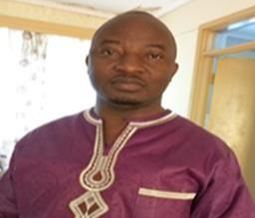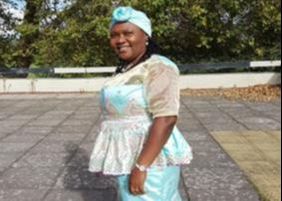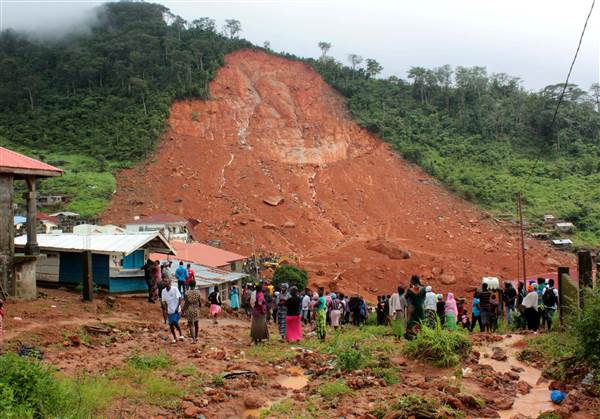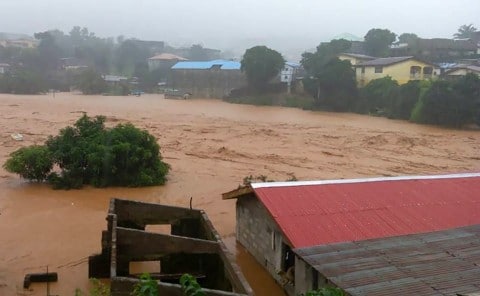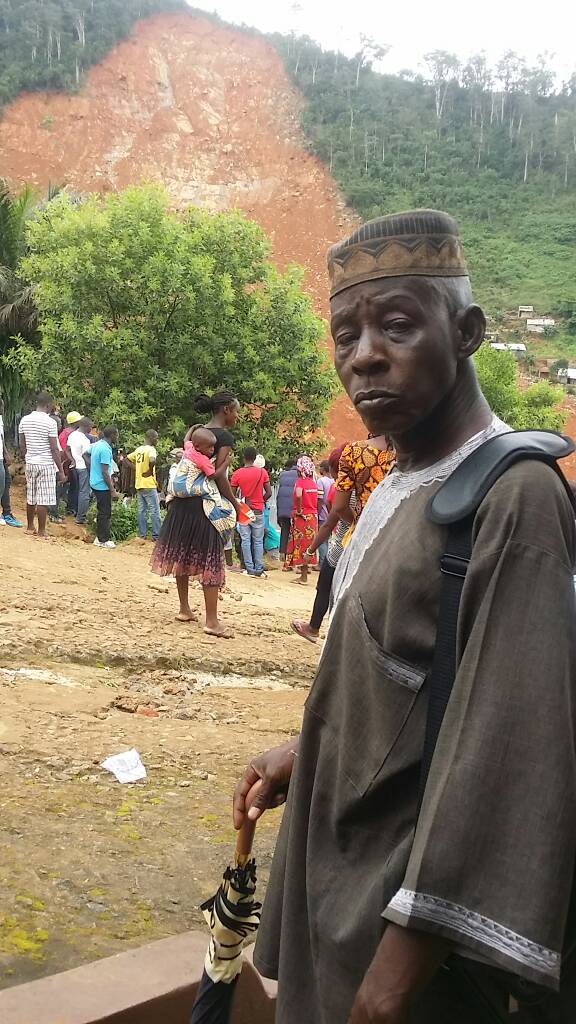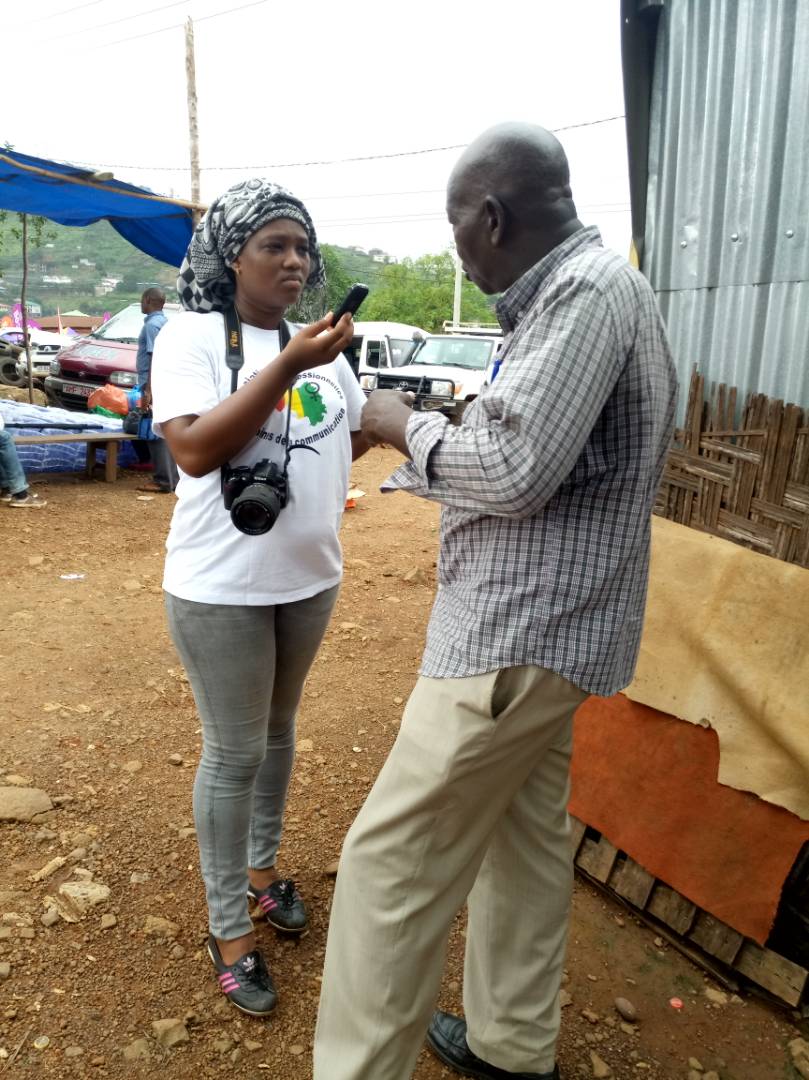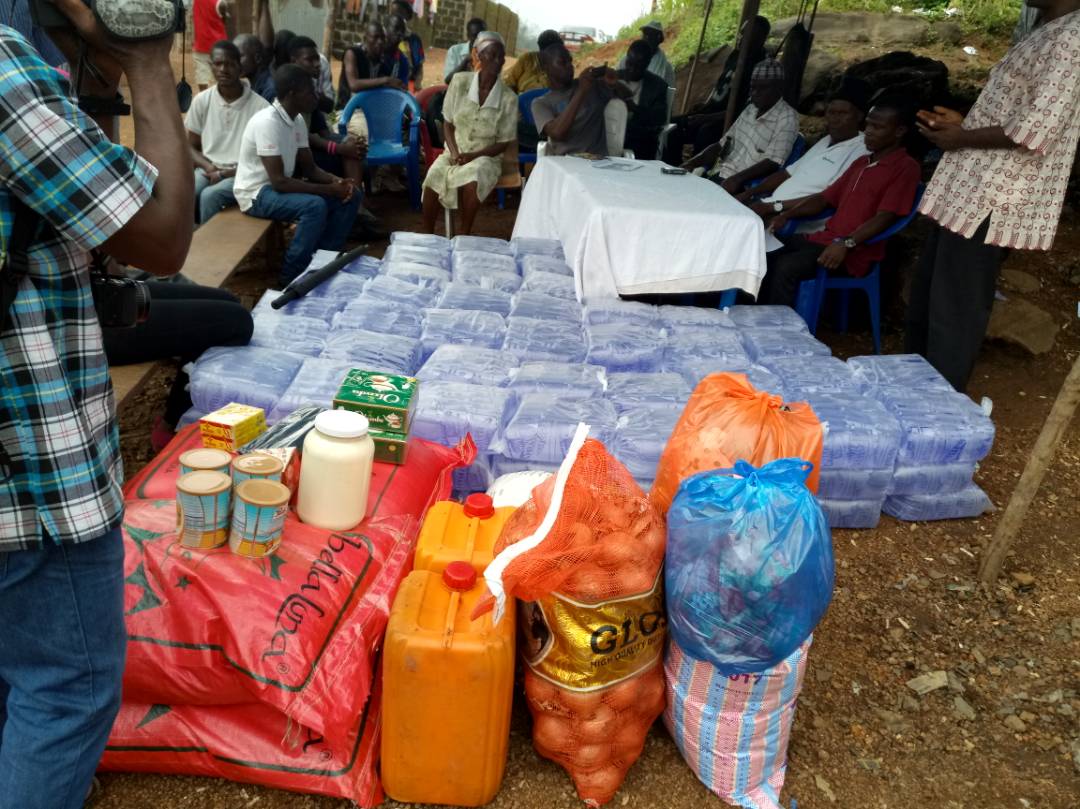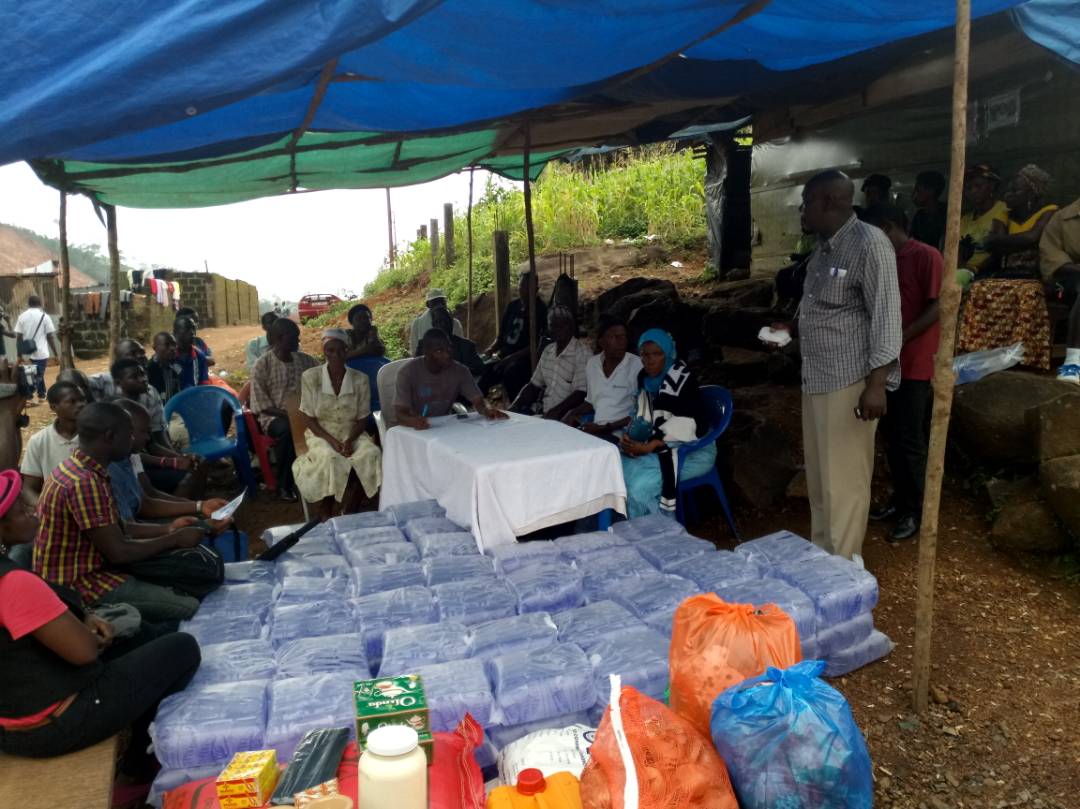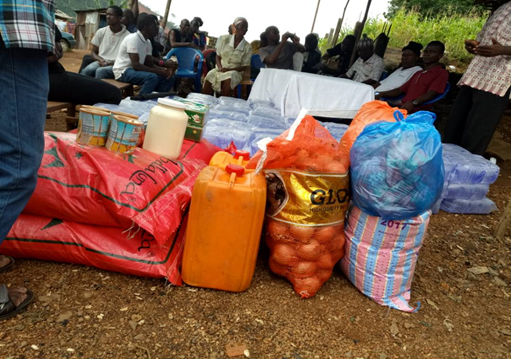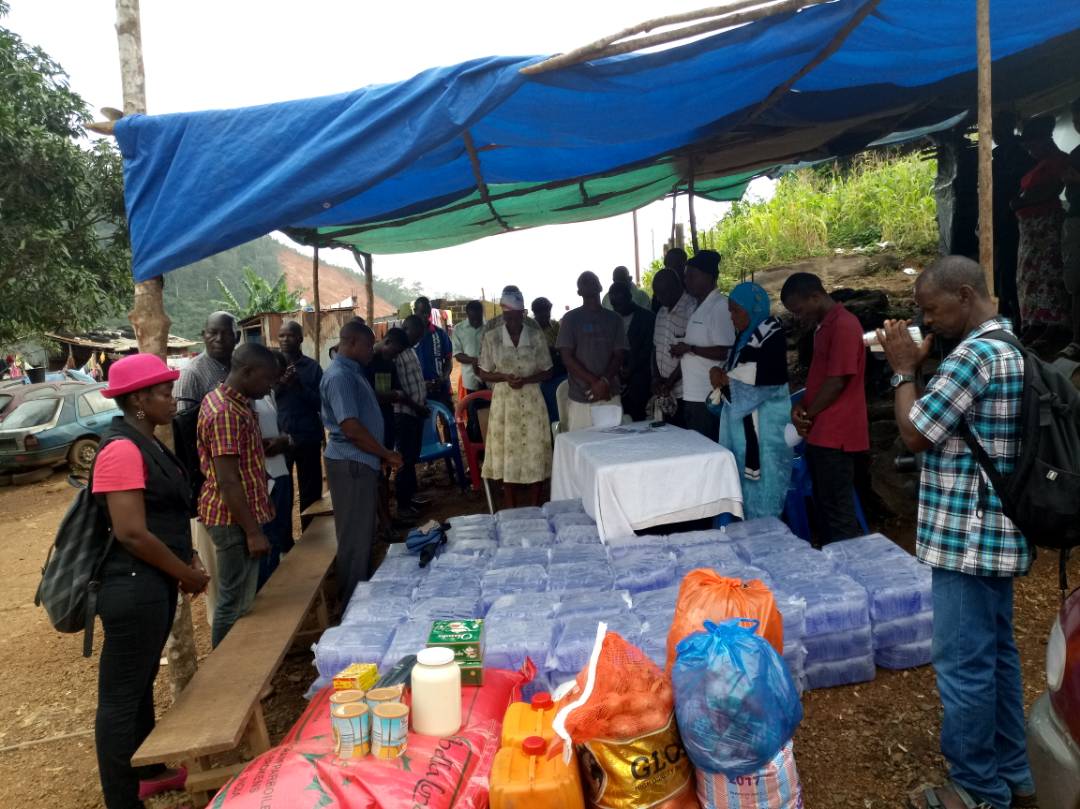KISDO’S ROLE TO THE KISSI COMMUNITY DURING THE RECENT MUDSLIDE IN FREETOWN, SIERRA LEONE (AUGUST 2017)
BY DR. PAUL FALLAH NABIEU & MRS. SIA MAMAKO FALLAH
Introduction
Located about 16km on the outskirts of Freetown and sitting between the Atlantic Ocean and a range of hills is the Regent town. According to Aljazeera online (2017), the town accommodates approximately one million people and many of them live in informal settlements on the steep hillsides.
On Monday August 14, at about 6 am local time (06:00 GMT), residents were greeted by a violent mudslide when the nearby hillsides collapsed after three days of torrential rain. As a result of this mudslide and the torrential rain, other areas or settlements like Motormeh, Kamayamah, Kaningo, Dworzak, New England, Kroobay, Mountain Cut, George Brook, Big Warf, and Wellington were seriously affected. The mudslide and rain overwhelmed Freetown's drainage system, creating waterways that churned down steep streets across the capital.
As a result of this natural disaster, more than 467 people died and at least a quarter of them were children and 600 are still missing.As the days progress, more bodies have been discovered in various areas. More than 3,000 people have been left homeless and hundreds of properties damaged or submerged by the mudslides and flooding. This is one of Africa's worst flood disasters in living memory.
This disaster is a classical history repeating itself in Sierra Leone. On the 11th August 1945, at about 4pm, part of one of the range of hills overlooking Charlotte village, (which is in close proximity to the towns of Regent) fell off as a landslide after about one week (4th to 11th) of torrential rains. About 7 houses were washed away and more than one hundred people died. It was recorded as the worst landslide ever to be experienced in Sierra Leone at that time. Today what remains of the hill is now renamed “Landslide Hill” and the area which was covered by the mud is now known as “Bottom Shekeh”.
The morgue at Freetown's Connaught Hospital has been so overwhelmed by dead bodies that many of them have been left on the floor for lack of space (The Guardian online, 2017). The burial took place on the 17th august 2017 at the Waterloo cemetry.
Every year, intense rains fall throughout Sierra Leone during the rainy season. In a dataset of annual precipitation by rainfall, Sierra Leone falls at number 12 globally. The Food and Agricultural Organization (FAO) of the United Nations (UN) estimated that the tiny West African country received over 2,500 mm of rain from 2013 to 2017 (National Geographic, 2017). As further stated by this author, floods killed 10 people and left thousands homeless in 2015. Sierra Leone has seen 104cm of rain since July 1, which is three times more than expecte during the rainy season (Aljazeera online, 2017)
Introduction
Located about 16km on the outskirts of Freetown and sitting between the Atlantic Ocean and a range of hills is the Regent town. According to Aljazeera online (2017), the town accommodates approximately one million people and many of them live in informal settlements on the steep hillsides.
On Monday August 14, at about 6 am local time (06:00 GMT), residents were greeted by a violent mudslide when the nearby hillsides collapsed after three days of torrential rain. As a result of this mudslide and the torrential rain, other areas or settlements like Motormeh, Kamayamah, Kaningo, Dworzak, New England, Kroobay, Mountain Cut, George Brook, Big Warf, and Wellington were seriously affected. The mudslide and rain overwhelmed Freetown's drainage system, creating waterways that churned down steep streets across the capital.
As a result of this natural disaster, more than 467 people died and at least a quarter of them were children and 600 are still missing.As the days progress, more bodies have been discovered in various areas. More than 3,000 people have been left homeless and hundreds of properties damaged or submerged by the mudslides and flooding. This is one of Africa's worst flood disasters in living memory.
This disaster is a classical history repeating itself in Sierra Leone. On the 11th August 1945, at about 4pm, part of one of the range of hills overlooking Charlotte village, (which is in close proximity to the towns of Regent) fell off as a landslide after about one week (4th to 11th) of torrential rains. About 7 houses were washed away and more than one hundred people died. It was recorded as the worst landslide ever to be experienced in Sierra Leone at that time. Today what remains of the hill is now renamed “Landslide Hill” and the area which was covered by the mud is now known as “Bottom Shekeh”.
The morgue at Freetown's Connaught Hospital has been so overwhelmed by dead bodies that many of them have been left on the floor for lack of space (The Guardian online, 2017). The burial took place on the 17th august 2017 at the Waterloo cemetry.
Every year, intense rains fall throughout Sierra Leone during the rainy season. In a dataset of annual precipitation by rainfall, Sierra Leone falls at number 12 globally. The Food and Agricultural Organization (FAO) of the United Nations (UN) estimated that the tiny West African country received over 2,500 mm of rain from 2013 to 2017 (National Geographic, 2017). As further stated by this author, floods killed 10 people and left thousands homeless in 2015. Sierra Leone has seen 104cm of rain since July 1, which is three times more than expecte during the rainy season (Aljazeera online, 2017)
The Regent landslide scar, via NBC / Reuters / Ernest Henry.
KISDO DONATIONS
Among the casualties of this natural disaster were The Kissi tribal and Regent Community leader. This newly elected tribal chief, Mr. Tamba Swarray and three other families lost about 20 members to the mudslide and flooding. KISSI SUSTAINABLE DEVELOPMENT ORGANIZATION (KISDO), the only registered Kissi NGO in the Mano River Basin and the diaspora generously contributed the sum of seven million Leones to purchase food and non-food items as an Emergency Relief for the surviving families. These items were distributed on Saturday 19th August 2017 to many people affected by this unfortunate and deadly incident. The beneficiaries included amongst others Kissi families and other ethnic groups in the community. These donations were provided by some kind hearted Kissi people in Sierra Leone as well as those in the Diaspora. The ceremony was chaired by the founder and Chairman of KISDO, Mr. Sahr Moses Fayia and the words of consolation were given by the National Coordinator, Pastor Thomas Fallah Lendeh. In his address, the Executive Director, Mr. Michael Sallu Mansaray exhilarated the community people to make use of this gesture wisely and to share with other affected people that did not benefit directly. The media coverage included journalists from Sierra Leone, Guinea and Liberia.
KISDO DONATIONS
Among the casualties of this natural disaster were The Kissi tribal and Regent Community leader. This newly elected tribal chief, Mr. Tamba Swarray and three other families lost about 20 members to the mudslide and flooding. KISSI SUSTAINABLE DEVELOPMENT ORGANIZATION (KISDO), the only registered Kissi NGO in the Mano River Basin and the diaspora generously contributed the sum of seven million Leones to purchase food and non-food items as an Emergency Relief for the surviving families. These items were distributed on Saturday 19th August 2017 to many people affected by this unfortunate and deadly incident. The beneficiaries included amongst others Kissi families and other ethnic groups in the community. These donations were provided by some kind hearted Kissi people in Sierra Leone as well as those in the Diaspora. The ceremony was chaired by the founder and Chairman of KISDO, Mr. Sahr Moses Fayia and the words of consolation were given by the National Coordinator, Pastor Thomas Fallah Lendeh. In his address, the Executive Director, Mr. Michael Sallu Mansaray exhilarated the community people to make use of this gesture wisely and to share with other affected people that did not benefit directly. The media coverage included journalists from Sierra Leone, Guinea and Liberia.
KISDO donations in pictures above
In addition to the above donations and contributions, KISDO would like to join hands with the Sierra Leone Government authorities in appealing to the Kissi residents at the site to relocate to the designated safe areas as a precautionary measure. If they however decide to stay –put at the same location for legitimate reasons, and then they should be encouraged to embark on serious and urgent tree planting exercise around their compounds and stop constructing houses along water ways. They should be advised not to build houses in valleys or what the Kissi man calls “Kpolokpolondan”. For such ventures could be risky, suicidal and deadly.
References
Aljazeera online 2017: Sierra Leone mudslide: What, where and why? Available from:
http://www.aljazeera.com/indepth/features/2017/08/sierra-leone-mudslide-170816053741558.html
Accessed 21/08/2017
National Geographic 2017, Explaining the Deadly Sierra Leone Mudslide. Available from: http://news.nationalgeographic.com/2017/08/sierra-leone-mudslide-deadly-video-spd/
Accessed 21/08/2017
The Guardian Online 2017. Hundreds killed after Sierra Leone mudslide. Available from:
https://www.theguardian.com/world/2017/aug/14/deaths-sierra-leone-mudslide-regent
Accessed 21/08/2017

